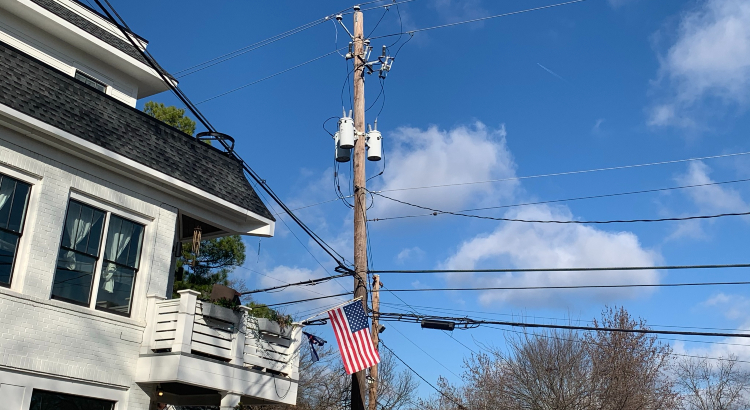Imagine an energy system in which each building serves as an extension of the power grid.
When all buildings were simply at the receiving end of electricity generated by a few big power plants, that idea wouldn’t have gotten very far. Now, however, many buildings generate and store their own power, and the grid itself is building the capacity to communicate with those buildings. Those two forces are combining to poise grid-integrated buildings as a potential energy and money saver for property owners.
“Grid-integrated efficient buildings” — as they’re properly called — will allow solar arrays, batteries, controls, appliances and other increasingly sophisticated building systems to communicate with larger smart grids to automate decisions on which watts go where, when, how and why.
As one expert on the topic put it, grid-integrated buildings are “sort of on the bleeding edge of innovation.” But builders, mechanical engineers, solar installers and various types of consultants would do well to prepare for what’s coming.
In May, after months of study and consultation with stakeholders, the New Buildings Institute and the U.S. Green Building Council unveiled a GridOptimal Metrics framework to rate the “grid-friendliness” of buildings. The two organizations devised the grading system to provide a way to measure how well buildings will perform as integration becomes more important.
“The purpose of the GridOptimal Buildings initiative is to empower buildings, as well as players on the grid side of the meter, to actively support a transition to a decarbonized grid by leveraging building-energy flexibility,” NBI’s Alexis Miller explained at webinar last year on the topic.
Along with the Rocky Mountain Institute, the two groups also have worked closely with the nation’s largest landlord — the U.S. General Services Administration — to investigate how federal buildings might impose grid-integration station standards on buildings it leases and owns. An RMI study found that GSA already could save $50 million a year by adopting grid integration, and the agency is now piloting four approaches to grid integration with its buildings.
It’s easy to see how grid-integration can save building owners money. Using electricity only when power is less expensive — or, better yet, sending stored electrons back to the power company at peak rates — will cut electric bills. The push to electrify more and more functions in high-performance buildings, not to mention vehicles, will increase the potential savings.
It’s more difficult to get your mind around the role that grid integration could play in tackling climate change. More efficient heating and cooling systems cut energy demand. Every new solar array decarbonizes supply. But would shuffling supply and demand from one place or time to another really make that much of a difference when it came to cutting the amount of carbon dioxide that went into the atmosphere?
The implications are both varied and profound when you stop to think about it. They include potential micro impacts. To take just one example, thousands of electric hot water tanks could store energy in the form of heat turning each one of them into a sort of battery, thus enhancing the grid’s capacity to store clean energy.
They also include macro impacts. Smoothing out demand during peak-load parts of the day would allow utilities to rely less on fossil-fuel power plants to fill the gap. And by spreading the storage capacity across the grid, integration could make entire communities more resilient to disasters and outages.
“Whether you’re concerned about carbon or cost, you need to start looking at this,” says Cara Carmichael, a building systems engineer who’s led RMI’s research into grid integration. “If we can put new loads on the system in a smarter way, where we’re not increasing our peak [demand], then we can increase efficiency and reduce the demand for fossil fuels.”
It’s unclear how grid-optimization will play out, because “there are pieces and parts happening today but not to the extent that will be possible in the future,” Carmichael admits.
Energy services companies are seen as likely early adopters because ESCOs are set up to benefit from the long-term energy savings they find for the property owners with whom they contract. Other natural beneficiaries may include campuses, where buildings can reap the rewards of optimization by networking with each other via microgrids and district energy systems. One good example: The energy storage capacity steam and chilled-water networks on a university campus like the one at Georgia Tech.
How can engineers, owners and building operators lay the groundwork for integration in a way that might give their properties a competitive advantage over others? Carmichael’s broad suggestions are similar to the advice that might be given to anyone seeking cut their energy bills and to “smarten” their buildings.
“I would advise folks that are working on new construction to double down on control systems, to triple down on efficiency, and to start thinking about storage that can help cut down on load, such as battery or thermal systems,” she says. “For existing buildings, loading up on efficiency and re-commissioning would be a good thing.”
Meanwhile, if you want to dig into the details, check out these resources on grid integration in buildings from the New Buildings Institute and the Rocky Mountain Institute.
PHOTO AT TOP by Ken Edelstein.


